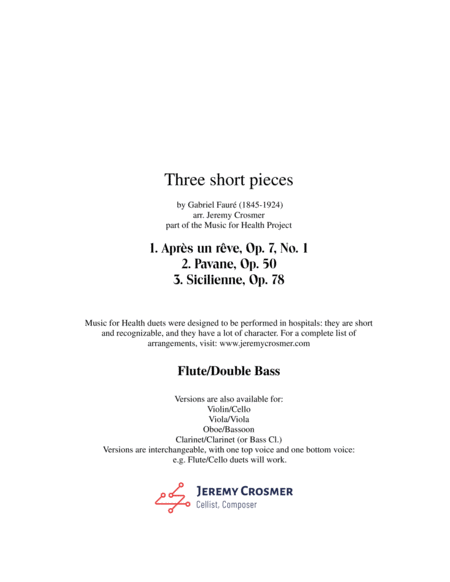Instrumental Duet Double Bass,Flute,Instrumental Duet - Level 3 - Digital Download SKU: A0.839077 Composed by Gabriel Faure. Arranged by Jeremy Crosmer. Romantic Period. Score and parts. 17 pages. Jeremy Crosmer #6057691. Published by Jeremy Crosmer (A0.839077). Three short pieces by the French composer Gabriel Fauré (1845-1924), arranged for duo as part of the Music for Health Project. 1. Après un rêve, Op. 7, No. 1 2. Pavane, Op. 50 3. Sicilienne, Op. 78 Music for Health duets were designed to be performed in hospital lobbies, cancer centers, and in assisting licensed Music Therapists in neuro-rehab centers. They are short and recognizable, and have a lot of character. For a complete list of arrangements, visit jeremycrosmer.com This version is for Flute/Double Bass duet. Versions are also available for: Violin/CelloViola/Viola Oboe/Bassoon Clarinet/Clarinet (or Bass Cl.) Versions are interchangeable: e.g. Flute/Cello duets will work. Jeremy Crosmer is a cellist with the Detroit Symphony Orchestra. He has degrees in Cello, Composition, Music Theory Pedagogy and Mathematics, and received his DMA from the University of Michigan in 2012.
